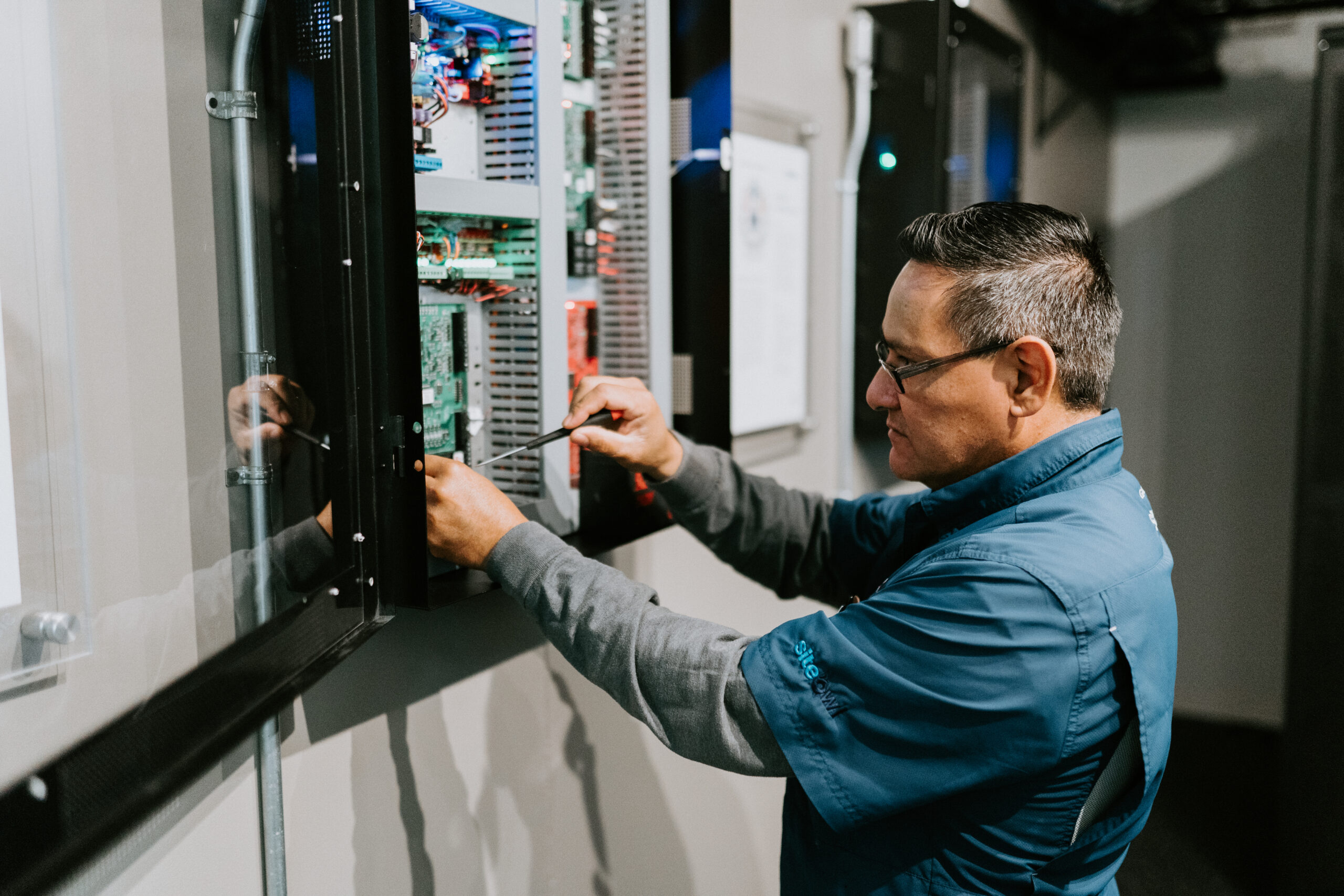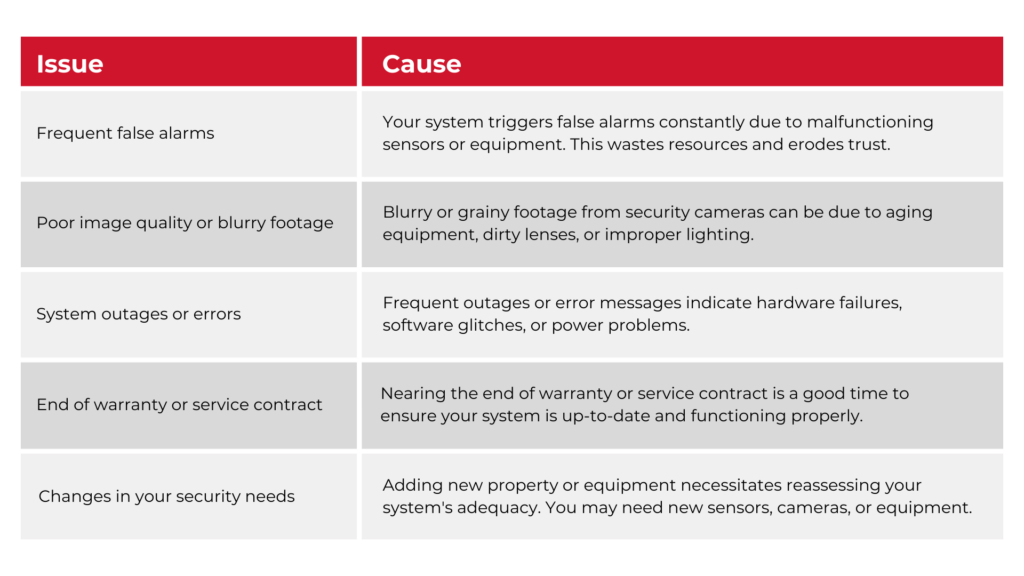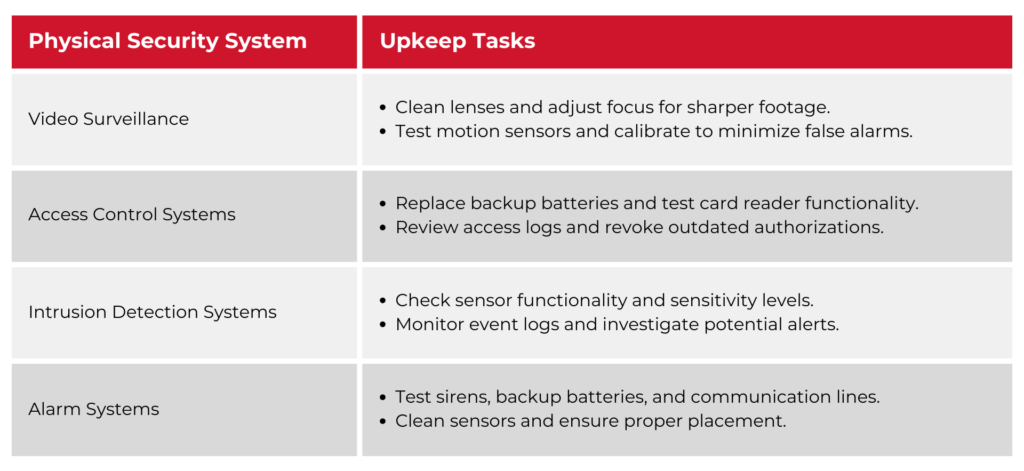
In a world teeming with security challenges, robust physical security isn’t just a to-do item, it’s a must-have. Picture this: strolling into a facility with no working security cameras, faulty entry gates, and zero greetings. You’d rightly worry about its safety, wouldn’t you?
Achieving top-notch physical security requires more than just a ‘set and forget’ approach. It requires technical expertise and a dedicated commitment to protecting your people, property, and assets.
Let’s explore why taking a proactive approach to physical security matters and how proven methods can improve your security measures in 2024 and beyond!
The Importance of Proactive Physical Security
When it comes to maintaining a robust physical security infrastructure, the conventional approach of simply reacting to incidents is a losing game.
Here’s why the reactive approach falls short:
- Inefficient and costly: By the time an incident occurs, damage has already been done. This can involve stolen property, operational disruption, injuries, or worse. The cost of recovery can be immense, both financially and reputational.
- Lacks foresight and preparedness: Reactive measures are like putting out fires after they’ve started. They fail to address underlying vulnerabilities and don’t anticipate potential threats. This leaves your security posture constantly vulnerable to evolving tactics and emerging risks.
- Breeds a culture of fear and uncertainty: A reactive approach fosters a sense of vulnerability and fear among those within the protected space. It can also lead to employee morale issues and hinder productivity.
Though eliminating every risk is unfeasible, just responding to incidents as they occur is akin to playing a defensive game with a blindfold on.
A proactive approach to security management enables you to:
- Keep your team and infrastructure in sync.
- Build resilience and flexibility into your security framework.
- Leverage technology to improve your security posture.
- Build a culture of safety and awareness.
In short, by shifting your focus from responding to incidents to preventing them from happening in the first place, you can build a more robust and sustainable physical security infrastructure. But what does a proactive security management approach entail, and where do you start?
Unpacking Proactive Physical Security Management
The days of merely guarding gates and hoping for the best are over. In the rapidly changing world of security, consistent maintenance and service are key to the optimal functioning of your security systems. Much like a car requires regular oil changes and tune-ups to run smoothly and safely, your security systems demand a similar level of care and attention.
In addition to the operational benefits of proactive maintenance, there are also significant strategic and financial benefits to making this shift in your approach to security maintenance, including:
- Maximized System Lifespan: Just like regular maintenance extends the life of your car, it also extends the life of your security systems. By keeping them clean, lubricated, and up-to-date, you can avoid premature wear and tear, saving you money on replacements in the long run.
- Enhanced System Performance: Regular service and upkeep ensure that your security systems are operating at peak efficiency. This means sharper cameras, faster response times, and more accurate data, all of which contribute to a more secure environment.
- Maintained Compliance: Many regulations and insurance policies require regular maintenance of security systems. By staying on top of your service schedule, you can avoid fines and ensure your coverage remains valid.
Last but certainly not least, knowing that your security systems are in top condition gives you peace of mind. You can rest assured that your property and people are being protected effectively, 24/7.
Signs Your Physical Security Systems Need Service
Many physical security teams find themselves reacting to maintenance issues after they occur. This often leads to increased operational costs, lost time, and productivity. There are many reasons for this, but the main culprit is the need for a proactive approach to security maintenance.
Just like ignoring that check engine light will only lead to bigger problems, ignoring the warning signs of security system problems will only lead to more significant issues.
Here are a few of the most common warning signs that your security system needs to be serviced.

In addition to these big-picture issues, physical security systems give off clear and actionable warning signs that you should pay attention to in order to avoid problems down the road. Since a typical physical security setup includes multiple systems and components, it’s important to know what to look for to ensure you’re not ignoring warning signs of potential problems.
Video Surveillance System
- Blurry or grainy footage: This could indicate aging equipment, dirty lenses, or improper lighting. Invest in lens cleaning, consider an upgrade, and adjust lighting for clear visuals.
- Frequent disconnects or outages: Power problems, software glitches, or hardware failures could be the culprit. Schedule a system checkup to diagnose and resolve the issue.
- Motion alerts in unexpected places: This might signal faulty sensors or environmental triggers. Analyze patterns and adjust settings to minimize false alarms.
Access Control System
- Malfunctioning doors or turnstiles: Hardware issues, software glitches, or power problems could be at play. Schedule maintenance or repairs to ensure smooth operation.
- Unauthorized access attempts: This could indicate compromised credentials or system vulnerabilities. Update software, enforce strong password policies, and conduct regular security audits.
- Frequent card reader errors: Dirty readers, damaged cards, or outdated technology could be the problem. Clean readers, replace damaged cards, and consider an upgrade if necessary.
Intrusion Detection System
- False alarms at specific times or locations: Analyze patterns and adjust sensor settings to minimize false triggers. Environmental factors like wind or temperature changes could be at play.
- Unexplained system outages: Power problems, software bugs, or hardware failures could be the culprit. Schedule a system check to diagnose and resolve the issue.
- Missing or damaged sensors: Replace damaged sensors and ensure proper coverage to maintain optimal detection capabilities.
Components of Regular Service and Upkeep
Regular service and upkeep for your security systems is akin to changing your car’s tires and checking its brakes. Just as these crucial steps prevent accidents and ensure a smooth ride, proactive maintenance of your security systems wards off costly repairs and keeps your security robust and reliable.
Here are some of the most common physical security systems and actionable ways to ensure regular service and upkeep:

Download the full list of actionable security system upkeep tasks below:
Remember, consistency is key! By regularly implementing these upkeep tasks, you can build a robust and dependable physical security system that safeguards your assets, people, and peace of mind.
Utilizing a Service Agreement to Enhance Proactive Security Measures
A service agreement can be a powerful tool for proactive physical security, going beyond reactive incident response to preventative measures and ongoing maintenance. Think of it as a blueprint for proactive security, a binding partnership between you and a qualified security provider that goes beyond just responding to incidents. It’s about prevention, optimization, and staying ahead of the curve.
A service agreement goes beyond being merely a response plan; it’s a proactive guide for your security needs. At 3Sixty, this involves a partnership centered on preventive measures and holistic strategies
The 3Sixty approach in a nutshell:
- Assessment Phase: 3Sixty’s Lifecycle technicians begin with a comprehensive evaluation of your security infrastructure, systematically documenting all components and training your team for effective management.
- LIVE Service Agreement: From immediate service requests to annual maintenance checks, 3Sixty ensures every aspect of your system is clean, tested, and functioning at its best.
- Ongoing Service and Maintenance: Manage your service needs efficiently, with 3Sixty’s team ensuring prompt responses tailored to each situation’s urgency. The semi-annual maintenance involves a detailed inspection, including testing, cleaning, and adjustments for optimal performance.
- Review & Metrics: A core part of 3Sixty’s service is the ongoing dialogue and commitment to continuous improvement. Regular performance reviews and metric analysis help in fine-tuning strategies for superior service quality.
This is proactive security redefined: transforming service agreements into a dynamic, preventive force in security management.
Interested in learning more about proactive security measures and how they can benefit your organization? Contact 3Sixty Integrated for an in-depth discussion about service agreements and how they can help maintain and enhance your security infrastructure.
3Sixty Integrated is a Texas-based systems integrator that specializes in the design, installation, and maintenance of electronic security technology. We partner with organizations who want to streamline their electronic security infrastructure. Additionally, as a division of The Cook & Boardman Group, 3Sixty Integrated and our sister branches have a nationwide reach and over 65 years of experience offering total opening solutions, from custom doors, frames and hardware to security integration technology.

